What is the secret to elevating the flavor of your curries and dals? The answer lies in the aromatic and flavorful blend of spices known as garam masala. Homemade garam masala powder is an easy-to-make and rewarding process that allows you to experiment with different combinations of spices and customize the blend to your liking.
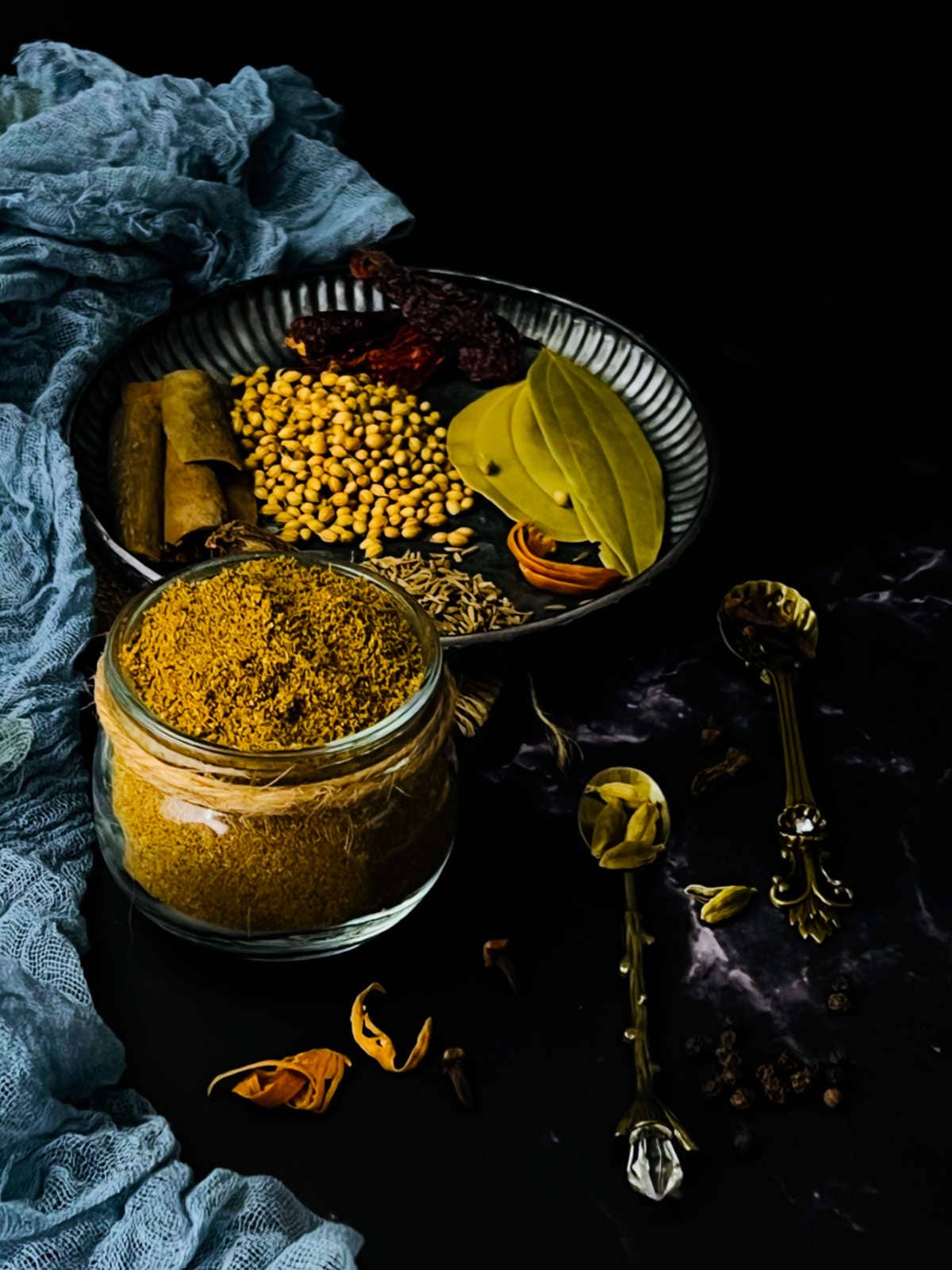
Garam masala is a fragrant and flavorful spice blend that is an essential ingredient in many Indian and South Asian dishes. The term "garam" means "hot" or "warm" in Hindi, referring to the warming properties of the spices used in the blend. This versatile spice blend can vary in ingredients and proportions depending on regional and personal preferences.
Garam masala is typically added to dishes towards the end of the cooking process or sprinkled on top of finished dishes as a finishing touch. With its rich, warm flavors, garam masala adds depth and complexity to curries, stews, and soups.
Having grown up in a South Indian household where traditional spices like sambar powder and rasam powder were more common, garam masala wasn't a staple. I started experimenting with various spice combinations until I crafted my own garam masala recipe, which has since become my preferred blend.
Why you will love this recipe?
- Tried and tested. This recipe ensures that the spices used complement each other, resulting in a balanced blend with no overpowering flavors.
- Customizable. Additionally, it is highly customizable to suit individual preferences. For example, adjust the level of heat by adding more dried chili or introduce a floral aroma by including dried rose petals.
- Fresh. Making homemade masala powder not only adds a personal touch to the final dish but also helps to know exactly what went into the dish. This makes it a fresh alternative to store-bought spice blends.
Ingredients
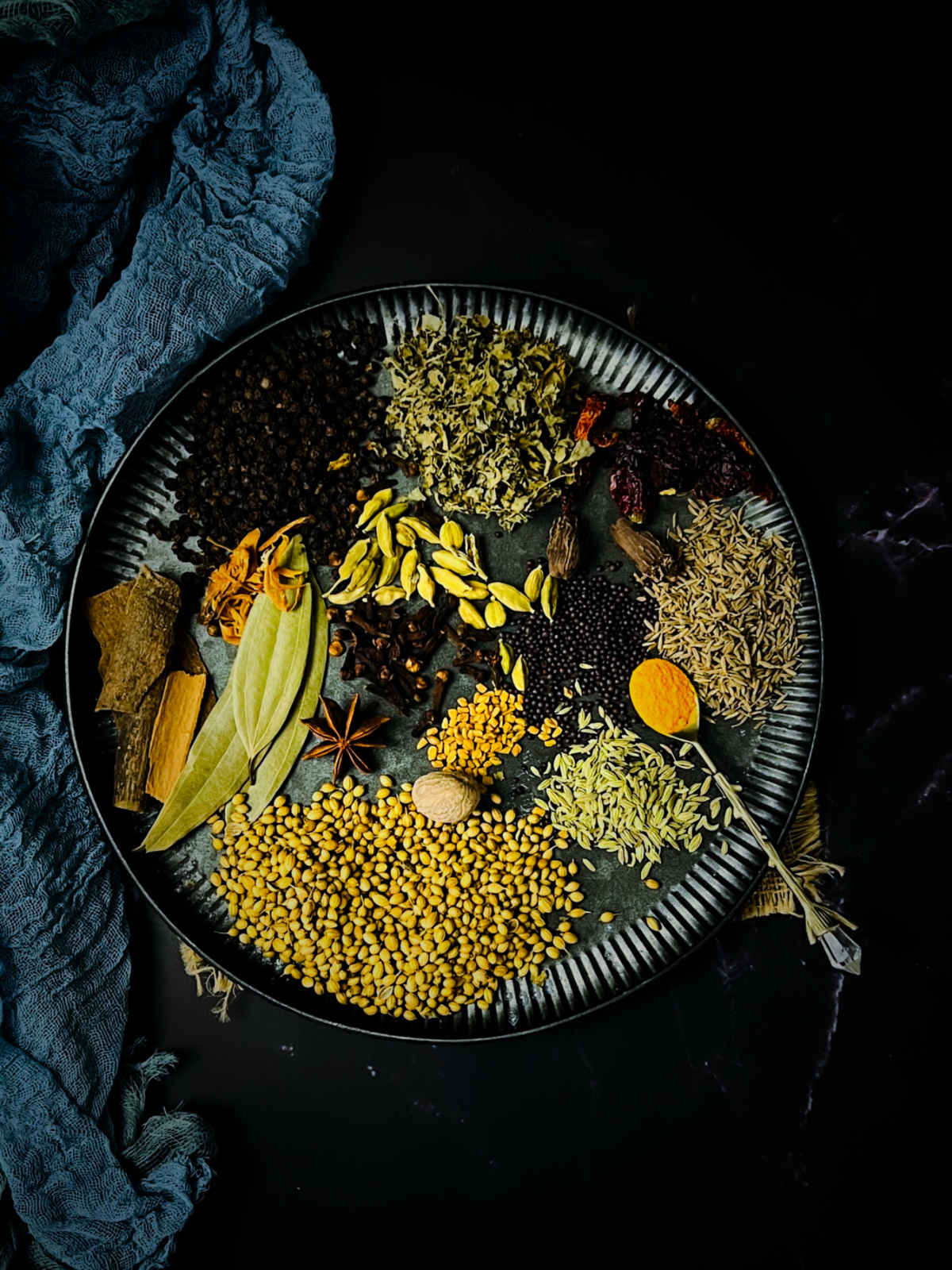
Garam masala is made with an array of spices. There is no SPECIFIC recipe. But they have some basic spices in common. My recipe here has coriander seeds, cumin seeds, dried chili, bay leaf, cardamom, cloves, cinnamon, peppercorn, mace, fennel seeds, mustard seeds, fenugreek, nutmeg, and turmeric. Here are some of the most commonly used spices.
See the recipe card for full information on ingredients and quantities
Step-by-step instructions
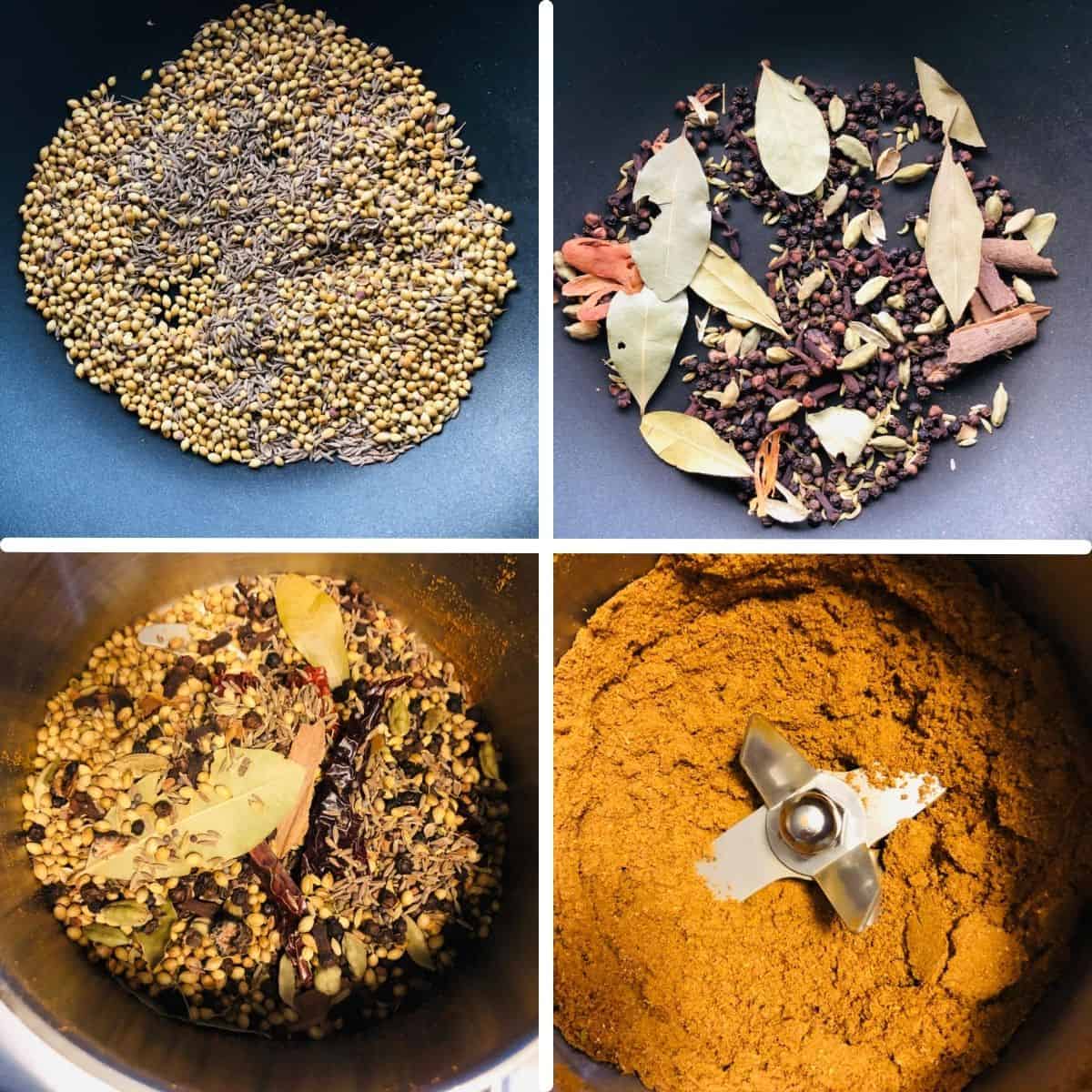
Step 1: Toast the spices in a
Step 2: Next, add the remaining whole spices - bay leaves, green cardamom, seeds of black cardamom, cinnamon, cloves, peppercorn, mace, star anise, nutmeg, fennel seeds, mustard seeds, fenugreek seeds, kasoori methi. Toast them until they are aromatic.
Step 3: Let all the roasted spices cool down completely. Transfer the spices to a spice grinder or mixie and add turmeric powder to it.
Step 4: Grind the spices into a fine powder. Store in an airtight container.
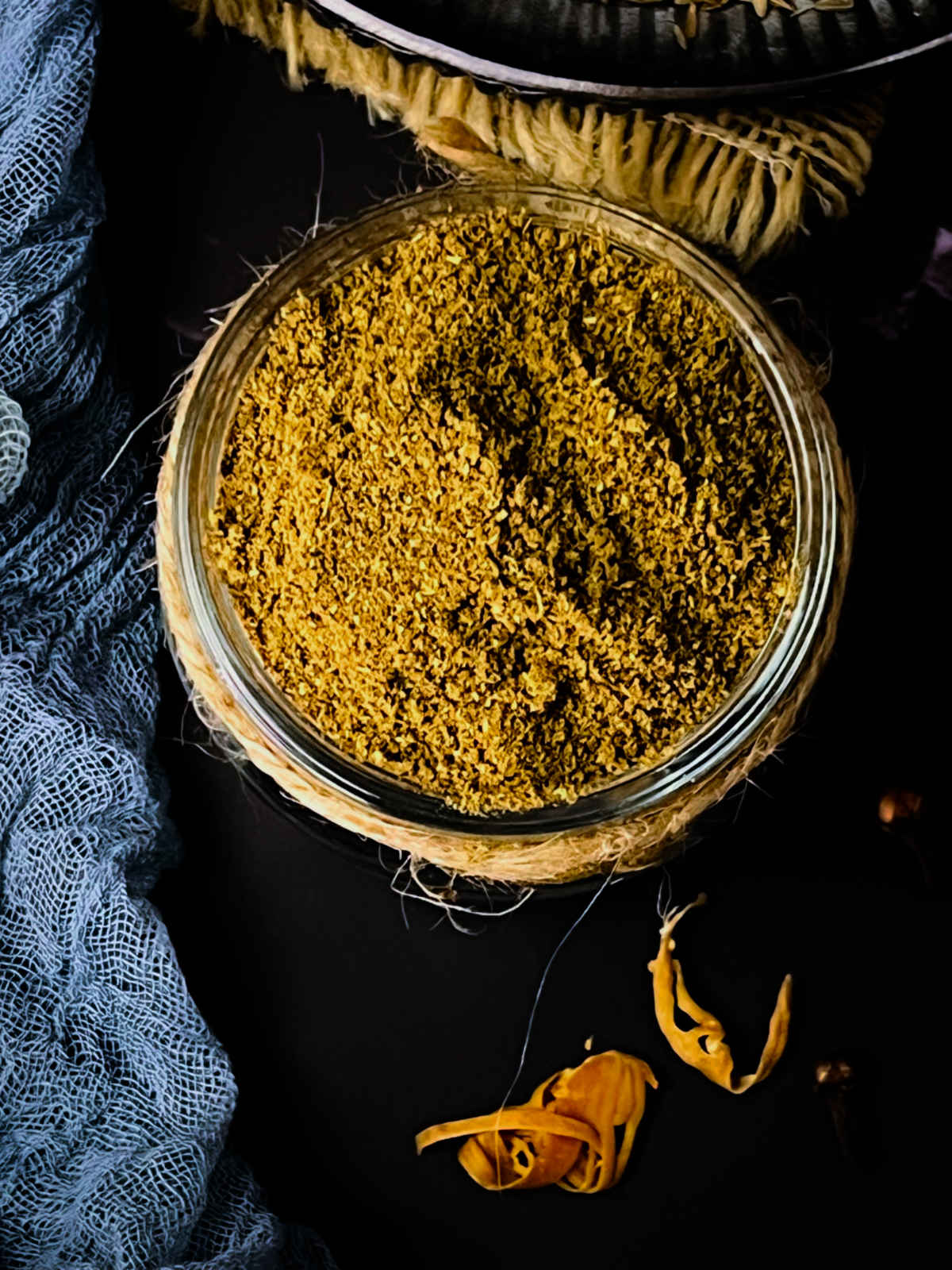
Expert Tips
Use whole spices instead of pre-ground spices to make the masala powder more aromatic and flavorful. Toast the whole spices in a dry pan before grinding them to release their essential oils.
It is best to grind the spices in small batches to ensure that they are evenly ground and to avoid overheating the grinder.
Store garam masala in an airtight container in a cool, dry place away from sunlight. It's best to use it within a few months for maximum freshness and flavor. This recipe will yield 8-10 tablespoons, so half or double the recipe as per your need.
Recipes using garam masala
Garam masala is used in vegetarian and meat-based curries, dal, and rice dishes. Classics like aloo gobi and chicken tikka masala are incomplete without it. I also like to use them in dishes like pasta chips and masala mac and cheese to add an Indian touch.
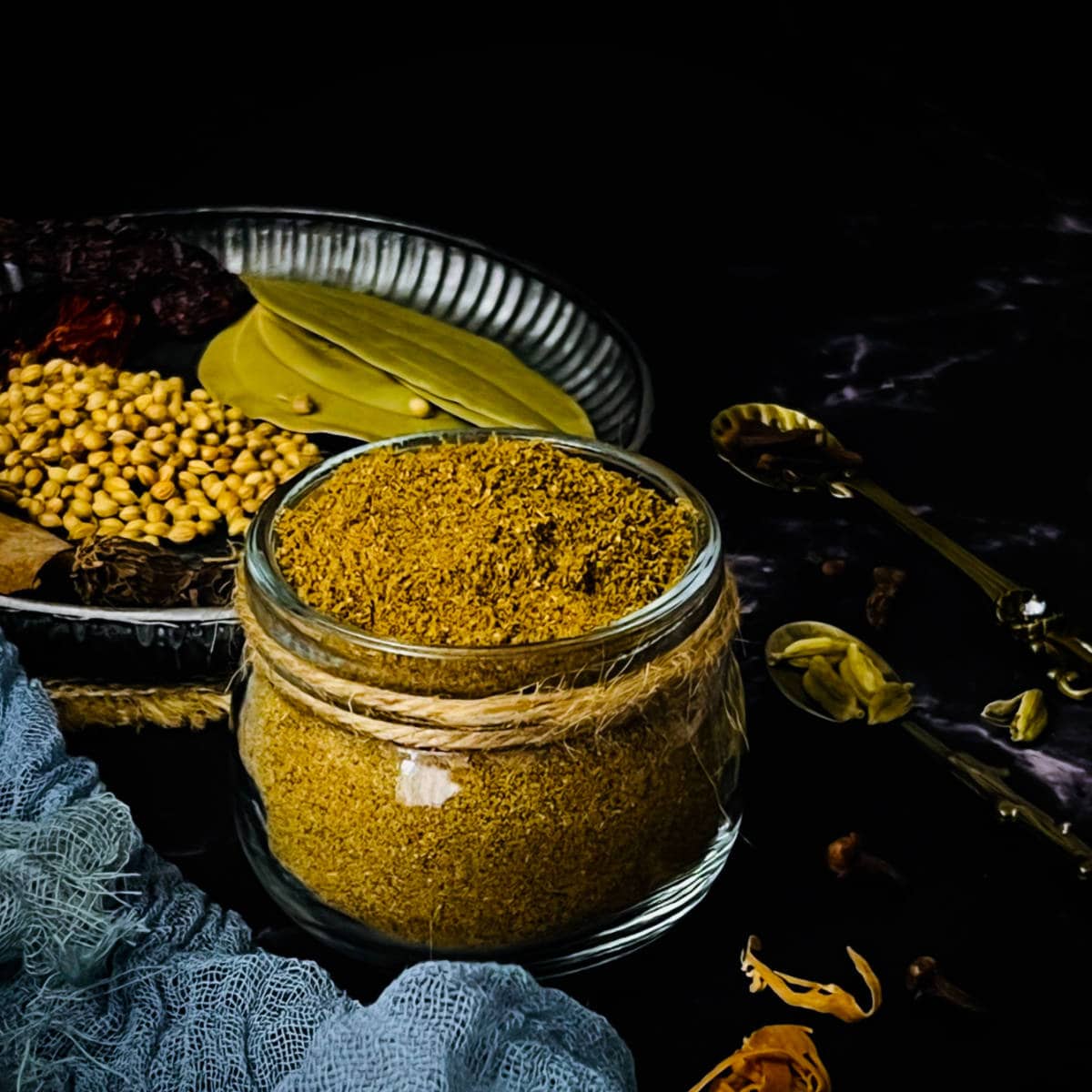
More spice blend recipes
If you tried this Homemade Garam Masala Recipe or any other recipe on my website, please leave a ? star rating and let me know how it went in the ? comments below.
Recipe card
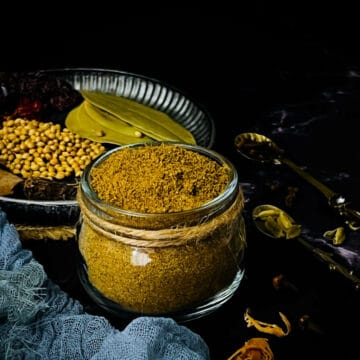
Homemade Garam Masala
Ingredients
- ½ cup coriander seeds
- ¼ cup cumin seeds
- 5 Kashmiri red chili
- 5-6 bay leaf
- 1 tablespoon green cardamom
- 3 black cardamom discard skin and use seeds
- 3 inch cinnamon
- 1 tablespoon cloves
- 2 tablespoon black pepper
- 3 mace
- 1 nutmeg
- 1 star anise
- 1 teaspoon fennel seeds saunf
- 1 teaspoon mustard seeds
- ½ teaspoon fenugreek seeds methi
- 2 teaspoon kasuri methi
- 1 teaspoon turmeric powder
Instructions
- Place frying or kadhai on medium heat. Once it heats well, reduce to low.
- Add the dried red chili and fry them until they puff up and become crisp. Set them aside on a wide plate or tray.
- Next, add coriander seeds and cumin seeds to the same pan. Dry roast them until they are aromatic and golden. Set them aside along with the red chili.
- Next, add bay leaves, green cardamom, seeds of black cardamom, cinnamon, cloves, peppercorn, mace, star anise, nutmeg, and fennel seeds. Dry roast until they are aromatic. Set them aside in the tray.
- Add mustard seeds and fenugreek seeds next and roast them until the mustard beings to pop. Set them aside.
- Add kasuri methi and dry roast it for a few seconds. Place it with the remaining spices.
- Let all the roasted spices cool down completely.
- Transfer the spices to a spice grinder or mixie and add turmeric powder to it.
- Grind into a fine powder.
- Store in an airtight container.

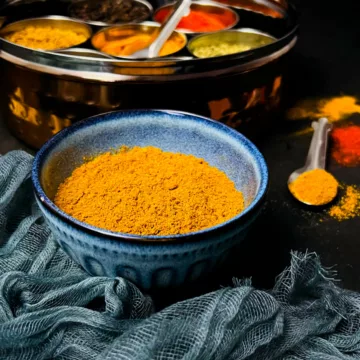
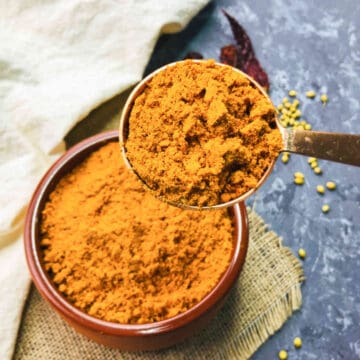

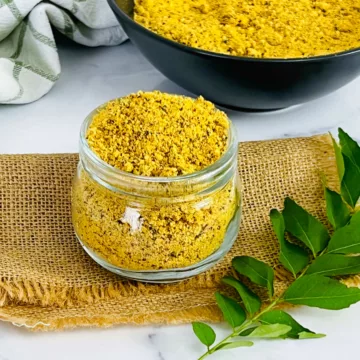
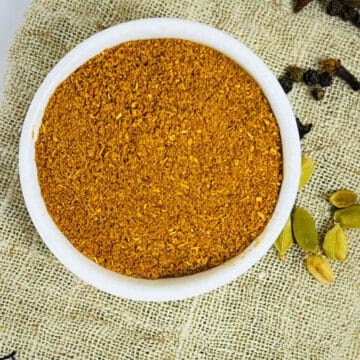

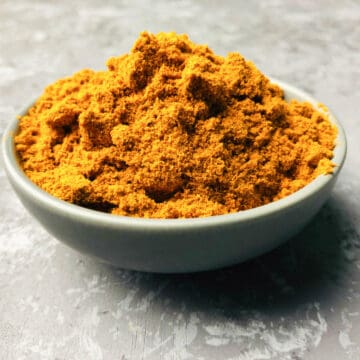
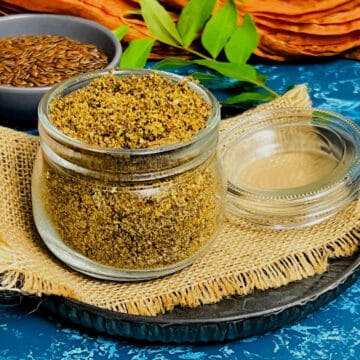
Comments
No Comments